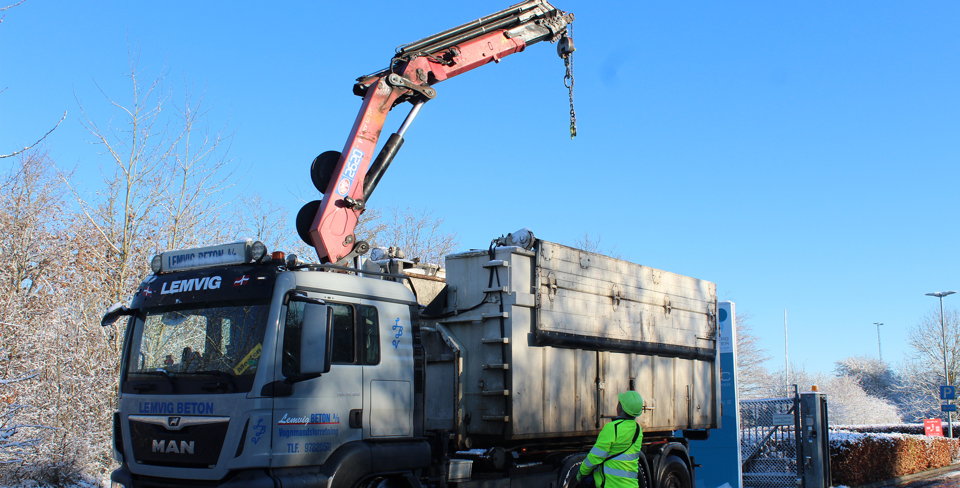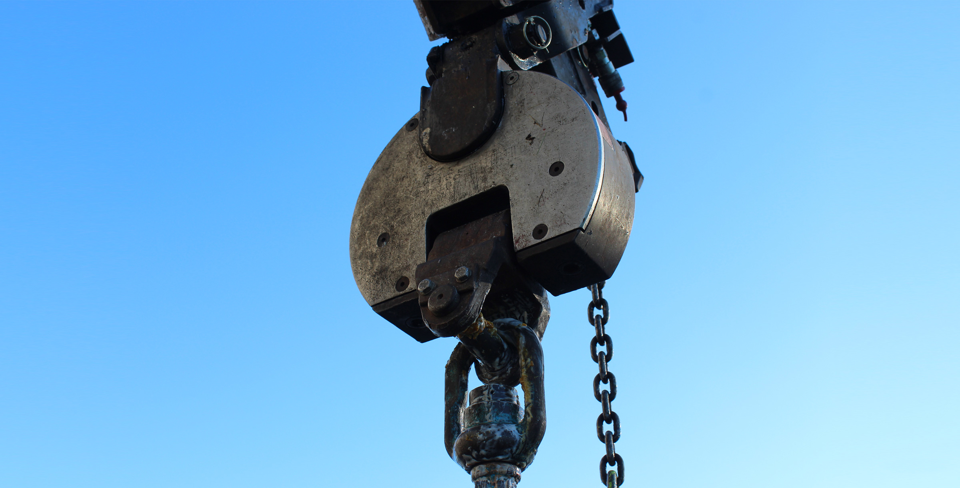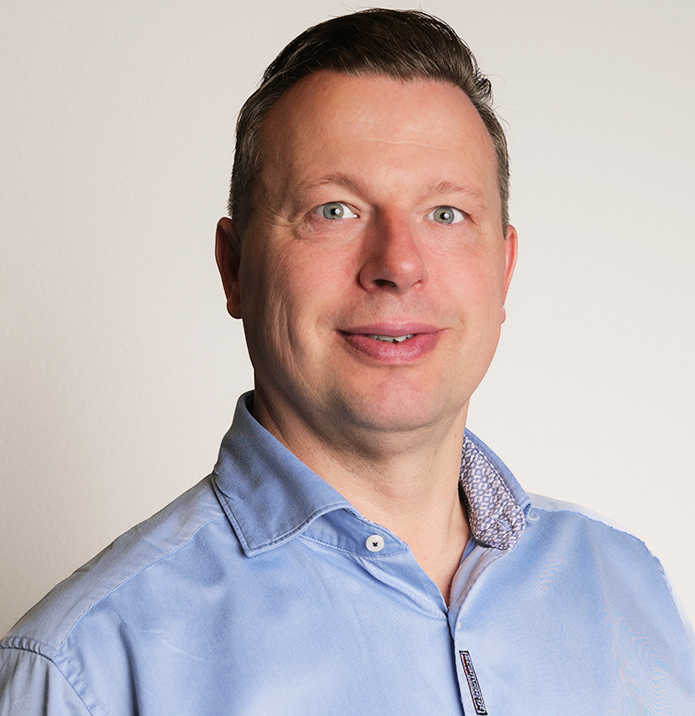NVF Renovation: Efficient Route Planning with Added Benefits
Case Study: NVF Renovation

NVF Renovation in Lemvig focuses on municipal waste collection. One of their more specialized tasks is emptying underground waste containers for housing associations. For this task, the transport company uses trucks equipped with cranes.
Lemvig Beton operates a large transport business, which includes the NVF Renovation division that provides services for the waste management company Nomi4S in Holstebro. This involves collecting household waste from private residences, where the waste must be sorted into ten different fractions.
The waste collection fleet consists of 15 compactor trucks and four crane trucks, operating in the municipalities of Skive, Holstebro, Struer, and Lemvig.
The 15 trucks collect household waste-like refuse, as well as glass, metal, cardboard/paper, and plastic/MDK. The four crane trucks handle the emptying of Moloks — underground containers typically located in waste collection points within housing associations. The crane is equipped with an integrated Scanvaegt scale that weighs the large sack-like units stored inside the three- or five-cubic-meter containers. Some Moloks are divided into two compartments. At the top, the Molok is fitted with hooks that the crane grips to lift the sack, weigh it, and then empty its contents into the open truck bed.
Automatic Reporting and Accurate Billing Basis
Weight and fraction data are automatically transmitted to the municipality, which simultaneously receives information reflecting the exact basis for billing. This process is managed in the Evolution system, developed by Scanvaegt/Botek.
The underground containers are emptied according to a fixed schedule by agreement—the frequency of emptying varies by waste fraction—but housing associations can, of course, request additional emptyings as needed. At the receiving facility or incineration plant, the waste quantity is weighed again, and any discrepancy from the crane scale data must not exceed five percent.
“It is a huge advantage for us that the reporting of waste quantities is automated. Otherwise, we would have to enter this data manually. This saves us a lot of work hours and hassle, and the system works very well and is easy to operate,” says department manager Morten Berthelsen from Lemvig Beton.
He clearly observes a trend where more and more housing associations are switching to the Molok solution.
“The benefit for a housing association is that the waste immediately disappears into the Molok, and the area around the waste collection point looks much tidier compared to when there might have been 30 containers. The Molok solution requires less space, and there are virtually no odor nuisances,” explains Morten Berthelsen.
NVF Renovation is currently testing a compactor truck with a crane and a partially open truck bed to determine if this combination is cost-effective.

It is a huge advantage for us that the reporting of waste quantities is automated—otherwise, we would have to enter all the data manually. This saves us many working hours and reduces hassle. At the same time, the system works very well and is easy to use

Department Manager, Lemvig Beton
Route Optimization System Saves Time and Fuel
NVF Renovation also uses Evolution for automatic route planning. All collection addresses are equipped with GPS coordinates, allowing the office to visually track the progress of each waste collection truck or crane truck during daily operations. When a container is emptied, the corresponding point on the driver’s tablet and the office screen changes color from gray to green. If an employee forgets to empty a container, the point automatically turns red (the address remains visible on the tablet and screen) once the garbage truck leaves the area.
“We save a significant number of hours on route optimization by using Evolution. If an extra collection is requested — even at the last minute — the information is entered into the system, and the driver can immediately see the address for the additional pickup on their tablet. They have access to both a list of collection addresses and a geographic map. The system also makes it easy, for example, to move a street with collection addresses from one driver’s route to another,” explains Morten Berthelsen.
He outlines that the system improves the business in three areas: the number of collections per day, route optimization resulting in reduced time and fuel consumption, and optimization of the fractions to be collected.
“Geographically, Evolution ensures optimal route planning. This means we are efficient and accurate in our work, and also that we have complete control over the tasks completed per route, which in turn ensures a very low error rate and full documentation of our collections,” says Morten Berthelsen.
Contact our heavy duty experts

Have a question? Request a callback